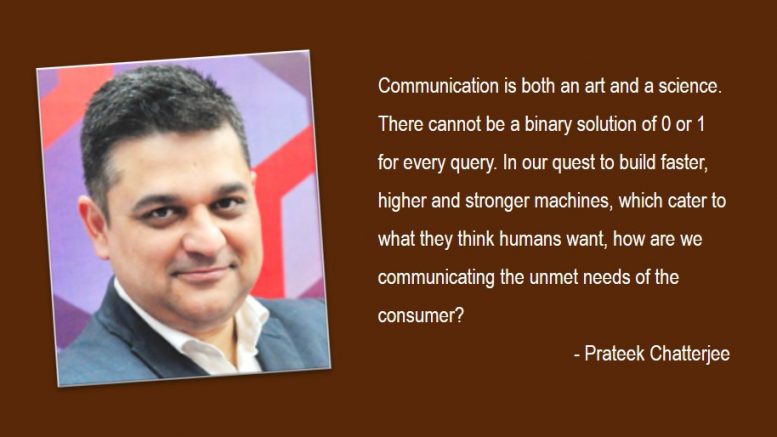In pursuit of ‘fitting-in’, are we losing the exact essence of contentment … ?
Citius, Altius, Fortius – these inspiring three words have stayed with me ever since I got the grasp of what it meant in English. Translated as faster, higher, stronger – what better expressions than these to reflect the spirit of the legendary sporting event Olympics, and that of humanity itself.
Coming to think of it, it isn’t just the athletes who are in pursuit of speed, advancement and strength… the world in general is constantly chasing power, name and glamour. We survive from day-to-day, heading straight to extinction – a bunch of gen-next superhumans, persistently pushing boundaries and breaking records. No one wants to settle for less – and that’s a good thing. Or maybe not? Because in the process, every big glory and joy is just so transient.
Remember that scene from Judgement Day when the Terminator (Arnold Schwarzenegger) asks John Connor (Edward Furlong) Why do you cry? And he replies, “I don’t know. We just cry. You know. When it hurts.” The terminator is curious to know if pain causes crying? But then Connor tries to explain, “Uh-unh, no, it’s different…it’s when there’s nothing wrong with you but you hurt anyways. You get it?” and the Terminator says, “No.”
That ‘No’ says a lot. Emotions, are the only thing that differentiates us from machines, robots and our digital avatars. It’s amazing how the human mind is capable of forgetting the spoken word, but it captures the way it was said – of how you were made to feel. However, in this digital world of social media likes and pokes, where is the scope for feelings and reactions? Can a smiley really express how happy or agitated you are, much better than the tone of your own voice. Can it roll eyeballs better than how you can simultaneously raise an eyebrow, for real? Is video calling the same as holding hands and walking down the street? I’d say, we’re all in it ‘alone, together’ – the only oxymoron that makes perfect sense of this seamless world.
Digital technology has succeeded in adapting our way of life and turning it upside down. Today, we are dependent on technology even for sourcing our emotional needs. Gadgets have become an extension of our personality and we carry a whole lab of sensors in our pockets that measure our every move and emotions. And we need not be connected with cords and cables either – like the XOX by Saatchi & Saatchi or the Q-sensor bracelet developed by Affectiva that communicates your state of mind through an RGB led. Or the sensors in some advanced cars that can detect the level of excitement or rage you are experiencing while driving and plays songs that will relax you, without making it too obvious that it’s trying to help. Thank you, that was thoughtful – you thought you wanted to listen to Coldplay, but the sensors felt Bach was more appropriate.
That is where my disconnect lies. In our quest to build faster, higher stronger machines, which cater to what they think humans want, how are we communicating the unmet needs of the consumer? Steve Jobs was known to have famously said that consumers do not know what they want. He then went on to develop iPhones, in times when the ultimate obsession was to have a smaller phone with more battery life. No one thought about the touch interface, as no one knew about it. To initiate Out-Of-The-Box thinking and drive effective stakeholder communication one needs to see things anew and improvise constantly. Communication is both an art and a science. There cannot be a binary solution of 0 or 1 for every query.
Not too far in the future, you can be in more places than one through your robot double or triple or quadruple. They will attend meetings on your behalf, attend your daughter’s birthday party and be as social as you are, while you sit in the comfort of your home, doing more “important” stuff. Like planning a solo backpacking vacation to the moon or booking tickets, so that one of yourself (read robot) can go see the glacier, before it melts away for real. At the end of the day, all of your extensions would bring back bundles of emotions to you to let you know how they (you) felt being there. Complex? Maybe not.
My fears are deeper. What if someday we are so used to digital communication that we can’t bear the sight of another human? Talking on WhatsApp in the same room isn’t unheard of today – but where does it leave the voice of love, care and concern. What if these very emotions that soothe us, begin to scare us? The digital footprint we leave behind gives out so much information about who we are as individuals that marketers, like sharks in the ocean that are waiting for your every single move (read click) to connect the dots using digital analytical tools to not only sell their wares but also influence the way we think. Before you’ve closed that window, a million robots across the globe are analyzing your very existence. I fear the day when all of us will be consumerist zombies, even worse, I fear when we will only be a number.
By now, you may think I am a cynic. I am not. In fact, I am all for technology and all its brilliant offerings – connectivity being the cream of the crop. It’s just that I feel that the digitisation of human expression may someday result in change in human behaviour but I am also saying that shouldn’t necessarily be the case. The ‘art of feeling’ is the greatest gift we have and in a bid to get faster, higher and stronger, lest we forget our basic instincts. I’m hoping someday digital technology will play with the voices in our head and teach us to be more empathic and kind – feed the hungry, clothe the poor. I’m hoping it will urge us to go ahead and write that poem, sing a song on stage, and play uninhibited in the grass and while we are at it, I hope it will ask us to stop and smell the roses too!
This article is part of series written by team leaders or professionals from the 30 Top Corporate Communication Teams powered by Kaizzen Communications.






Be the first to comment on "Faster, Higher & Stronger…but any happier?"